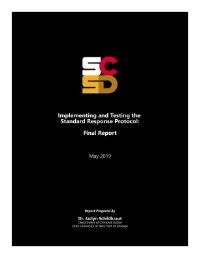By Jaclyn Schildkraut
Following the February 2018 shooting at Marjory Stoneman Douglas High School in Parkland, FL, the Syracuse City School District (SCSD) and SUNY Oswego’s Department of Criminal Justice joined together in an initiative to provide emergency response training to students, faculty, and staff alike. Through this grant-funded project, the research team implemented the Standard Response Protocol (SRP-X) from the I Love U Guys Foundation, which provides emergency preparedness training for five different situations: Lockout, Lockdown, Evacuate, Shelter, and Hold. These five scenarios also reflect the functional annexes that schools are required to train for by the State of New York.
Syracuse, NY: Department of Criminal Justice, State University of New York at Oswego, 2019. 119p.



